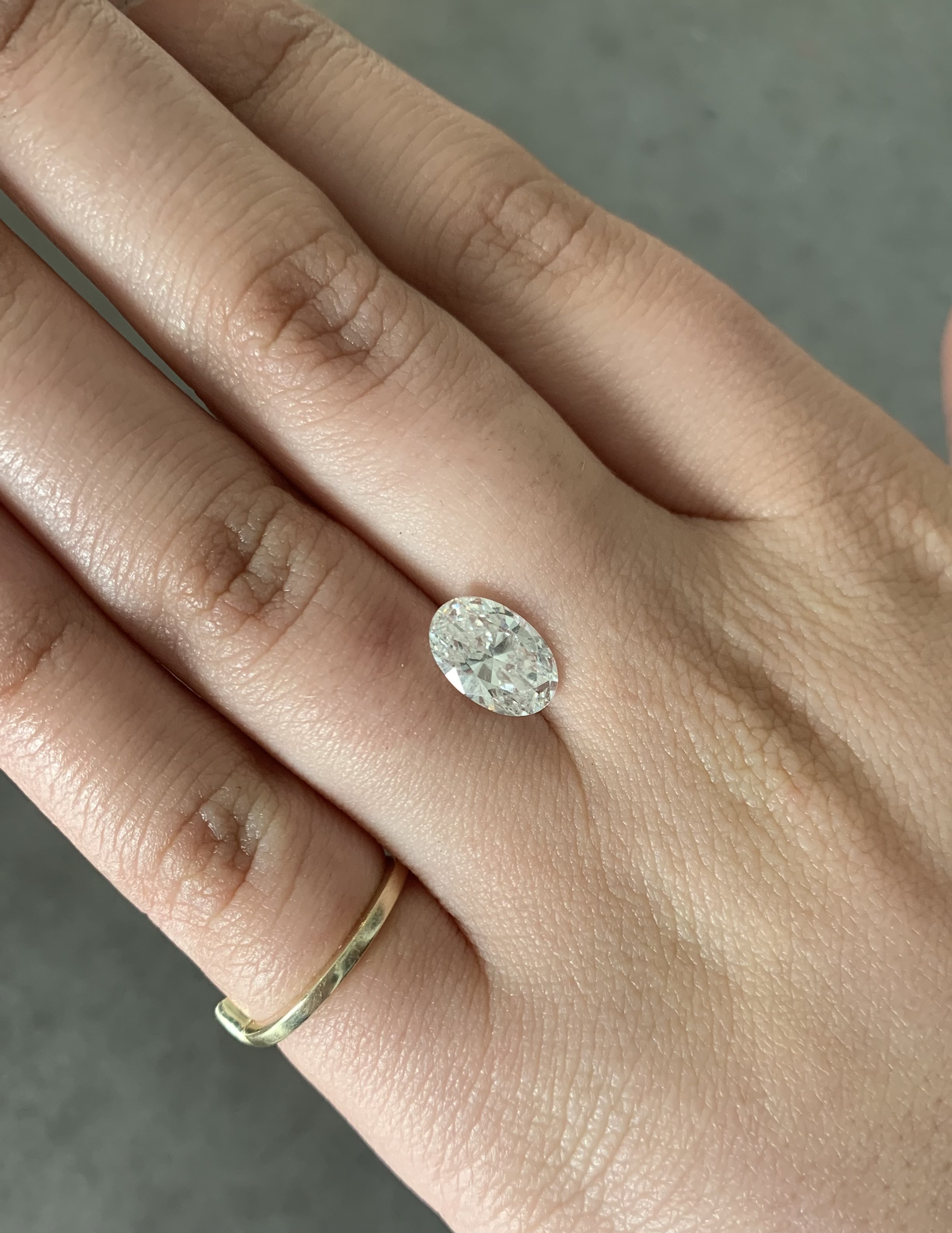Dazzling and magical yet carved out of stone, diamonds possess an otherworldly quality coupled with an origin story that’s equally extraordinary.
Formed deep in the earth’s mantle billions of years ago and hidden within areas of ancient rock, for diamonds to be accessible by humans is a miracle in itself — one that requires a serendipitous combination of geological conditions, explosive force and the luck of discovery. They’re a favourite of ours due to their mesmerising combination of brilliance and simplicity, and they feature in many of our pieces.
The history of diamond gemstones is rooted in India, where they were mined for centuries and traded around the world. The subcontinent was one of the only sources of diamonds until they were discovered in Brazil in the eighteenth century, and the modern diamond industry also includes Australia, Canada and South Africa. The fact that diamonds are found under the largest continents on earth is no coincidence.

Natural diamonds are billions of years old. A solid form of carbon, they are created deep inside the mantle of the earth, over one hundred and fifty kilometres below the surface of the planet. This process happens through a combination of extreme heat (at least one thousand degrees celsius) and pressure — levels of which are generally only found in the stable centres of continental planes.
When a diamond forms the carbon atoms are arranged in a crystal structure. This structure makes it not only incredibly strong, but also able to refract light (which is what gives a diamond that unparalleled sparkle). Coloured diamonds are created when an impurity replaces a carbon atom in the crystal structure, such as nitrogen for yellow diamonds and boron for blue.


Though born hundreds of kilometres beneath earth’s surface, diamonds are mined from far more accessible depths; the deepest diamond mine is around six hundred metres. They’re found within vertical “pipes” of igneous rock — which is made from cooled and solidified magma or lava — specifically kimberlite (rare) or lamproite (even more rare). Kimberlite is the geological vehicle that was responsible for transporting diamonds from the depths of their creation to where humans can find them.
Derived from magma, a kimberlite would have been pushed to the surface by deep volcanic eruptions over seventy million years ago. As the eruption surged upwards through the earth it collected and assimilated the material around it — including diamonds, bringing them closer to the surface of the planet where they are accessible by humans. Kimberlites are rare, and the eruptions themselves have never been recorded by modern humans.
Kimberlites are prone to weathering once exposed, so before the twentieth-century diamonds were usually found in alluvial deposits — loose sediment or soil that had been eroded and redeposited by water. Thanks to technological advancements most diamonds mining today is done through open pit or underground mines.

Diamonds are mined from the earth as rough stones. To transform into the multifaceted gems that we use for jewellery they must be expertly cut. A rough diamond can be cut by either hand or machine, and both processes are undertaken by a masterful expert. Each diamond must be assessed according to its structure as well as taking into account any flaws and imperfections, which will inform the plan made for how it will be cut. When it comes to the lexicon of diamonds, “cut” refers to not only the action but the outcome — the pattern of facets that define the shape of the final diamond stone. Cuts can include princess, cushion, marquise and more.
After being cut the diamond is polished, a process which is slow and time-consuming. Stones are then set within pieces of jewellery, sometimes again and again. Due to their inherent strength diamonds have enduring value and can be reused and repurposed with relative ease — making reclaimed stones a highly sustainable option, and one we use within some of our pieces.
Though most diamonds began their journey within planet earth, the building block of diamonds, carbon, is thought to come from far beyond it.
Scientists believe that in the early formation of earth, any carbon should either have evaporated into space or be locked in the core of the planet. It is thought that the carbon on earth today came from a collision 4.4 billion years ago with a planet similar to mercury, and that its carbon-rich mantel mixed with earth’s mantle.Tiny nanodiamonds are found in carbon-rich meteors in space, and they can also be created by meteorite impacts due to the heat and pressure. Scientists believe that some stars may even have diamond cores.
This extraterrestrial theory adds to the inherent magic of diamonds, tying them to worlds beyond our own and suggesting an interstellar origin — a possibility that makes this famous stone even more precious in our eyes.





